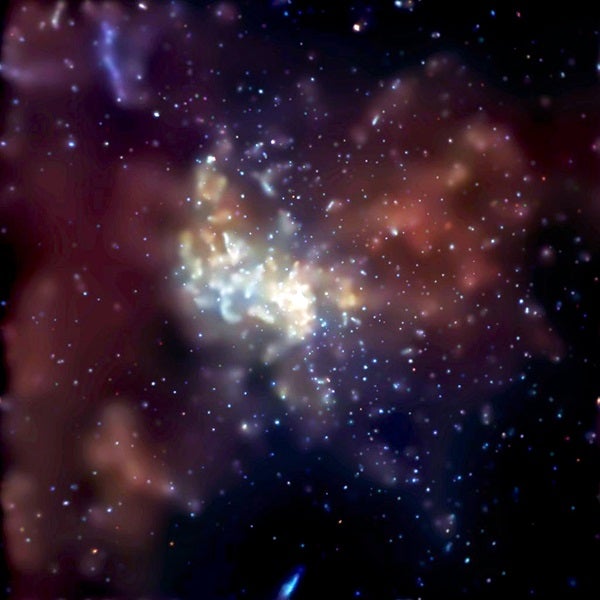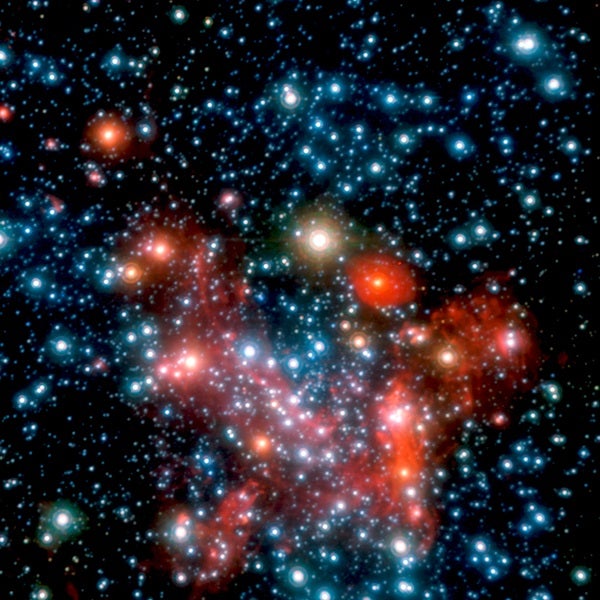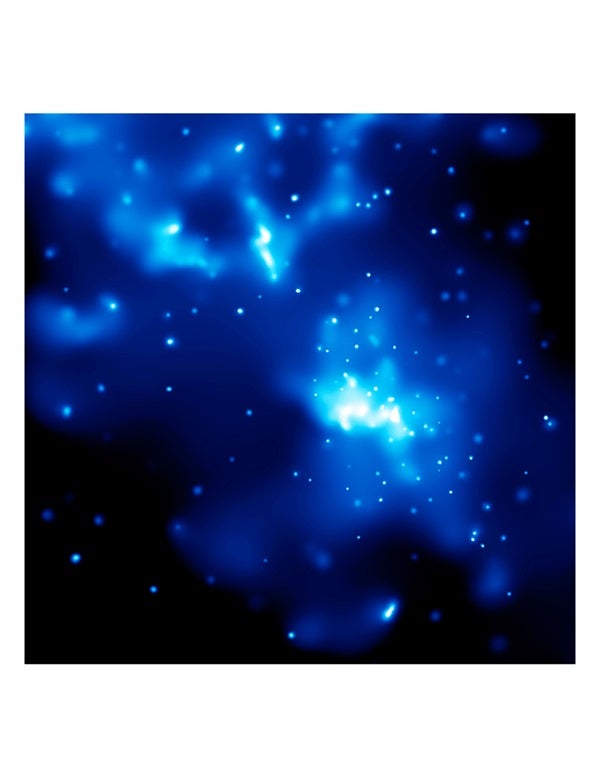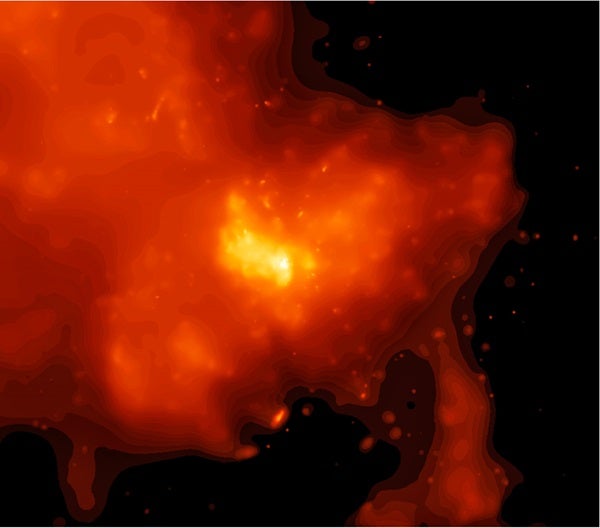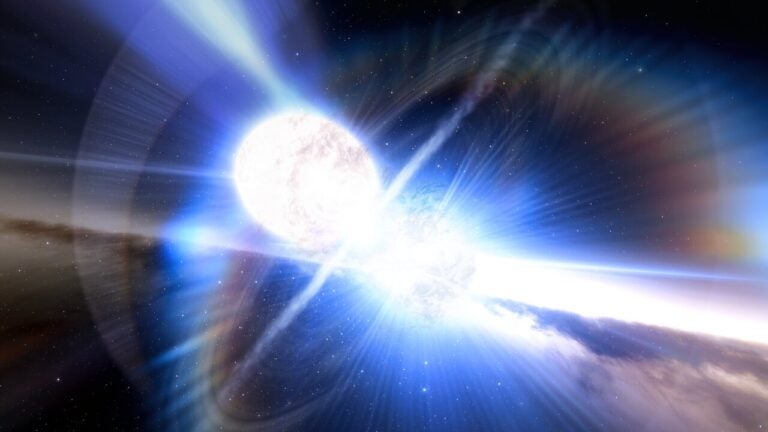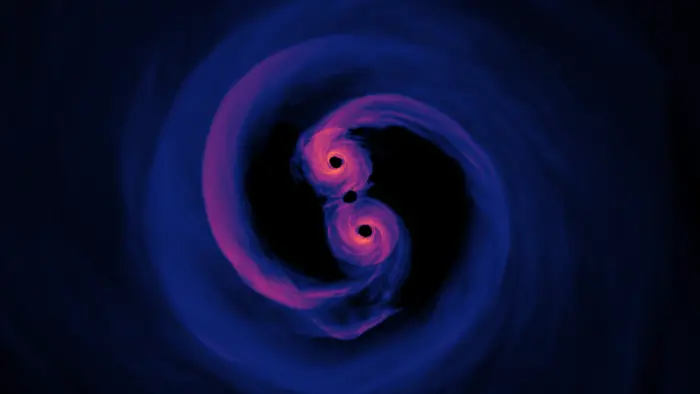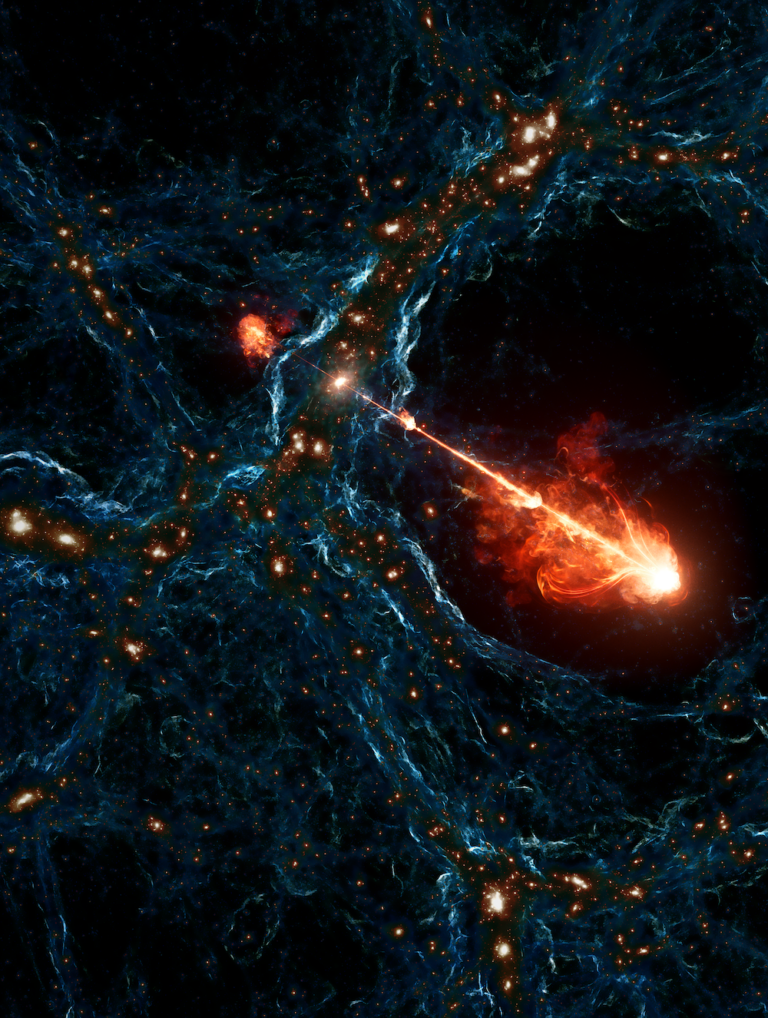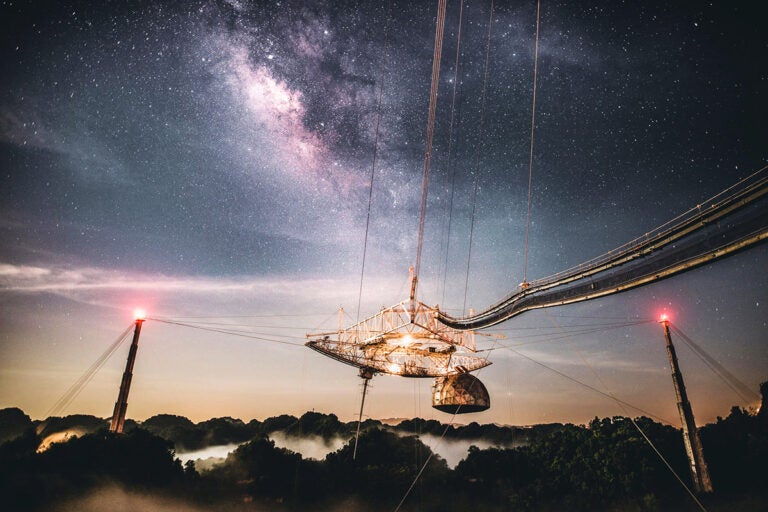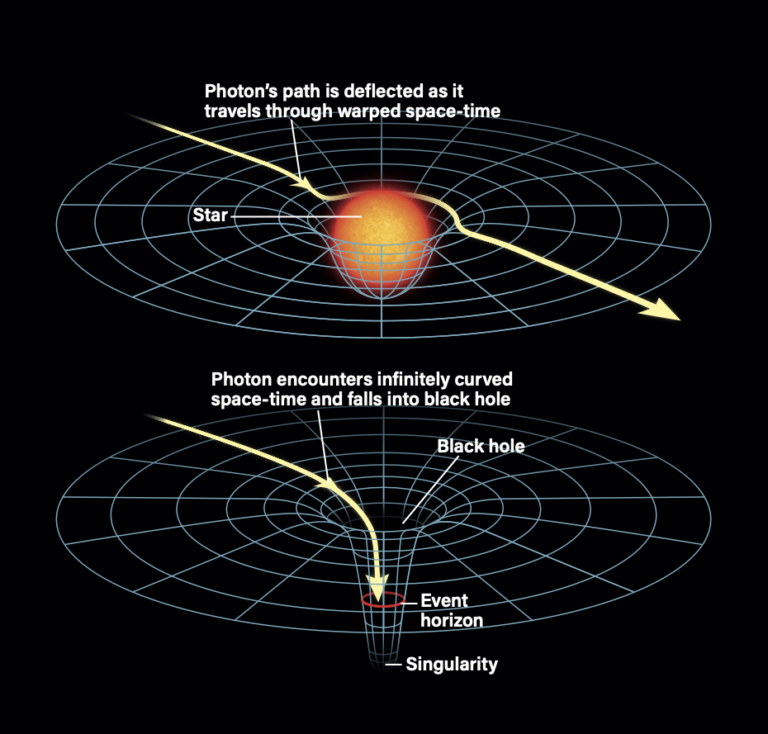Until recently, black holes seemed to come in only two sizes: either as a single heavy collapsed sun, or else weighing the same as millions or even billions of stars. Small or large. Only in 2014 did astronomers seemingly confirm the existence of a few intermediate-mass black holes, but still the only ones we’re mostly observing are either little or big. An example of the latter sits at the center of every galaxy.
This, happily, includes our Milky Way, because we wouldn’t want to be the only oddball in the neighborhood. But while the supermassive black holes in many other galaxies radiate X-rays or violently spew huge jets of material, ours is strangely quiet. Too quiet. It’s as if we’re hosting a sleeping monster.

Bringing the universe to your door. We’re excited to announce Astronomy magazine’s new Space and Beyond subscription box – a quarterly adventure, curated with an astronomy-themed collection in every box. Learn More >>.
Not that our galactic nucleus is a total mystery. While we cannot visually see what’s going on 27,200 light-years away because it’s hidden behind impenetrable sheets of dusty gas, other wavelengths of light still leak out. Radio telescopes long ago detected an intense emission there, named Sagittarius A. The black hole, deeply buried within that radio noise, received the peculiar name Sagittarius A* or Sgr A*. No, that asterisk doesn’t mean you should check the bottom of this page for some reference. It’s merely the name, which is pronounced “Sagittarius A-star.”
Sagittarius A* weighs 4 million solar masses, which is less heavy than what lurks within the cores of most galaxies. Still, that much mass is impressively crammed into a spherical volume with a radius of less than 13 million miles (21 million kilometers) — half of Mercury’s orbit. As to the actual nature of this ultra-crushed singularity, or even whether some unknown process has halted its shrinkage and prevented it from attaining zero volume, no one knows. Our physics fails.
Surrounding Sagittarius A* is its event horizon — the point at which any naturally in-falling material could not possibly escape. Lethal tidal forces lurk at the event horizons of single-star black holes, which typically weigh about 10 solar masses. If you crossed it feet-first and continued toward the ultra-dense singularity, your ankles would be yanked far faster than your knees, and so on. A ductile person, like Plastic Man of comic book fame, would be stretched into a miles-long strand of spaghetti. Less-elastic individuals would instead be torn to pieces like goulash.
Not the best way to visit another dimension. That’s why it’s better to book a trip to a “supermassive black hole,” where the tidal forces are paradoxically gentler. You could cross the event horizon of Sagittarius A* safely and not even know you’d made a serious navigational mistake. The only change you’d probably notice is that your phone calls wouldn’t get returned.
For observers outside the black hole’s event horizon, however, things look very different. Albert Einstein’s general theory of relativity tells us of time distortions seen by outsiders because of their different “reference frame.” To them, someone falling into the black hole would appear to gradually slow down and then freeze at the event horizon, where they would hang motionless forever.
When NASA’s Chandra X-ray Observatory monitored Sgr A* continuously for 164 hours in 2003, it detected weak X-rays flaring up and quieting down a half-dozen times. The cause of these flares — which occur at or near the event horizon — is still a mystery, but probably results from high-speed atoms spiraling inward to their doom. Meanwhile, huge lobes of ultra-hot gas stream away from opposite sides of the black hole and extend for dozens of light-years, a sign of larger explosive emissions over the past 10,000 years.
Without a doubt, Sgr A* is a starved black hole. These days, it doesn’t capture anything much. Perhaps a previous eating frenzy created so much energy that it blew its neighborhood clear of material.
Without much violence going on, the surest way to study Sagittarius A* is to see how it yanks nearby objects around. In the past few years, astronomers have focused on 28 stars wildly whirling around this black hole. One passed just 10 light-hours from Sgr A* in 2000. Another heavy blue star named S2 caught the full attention of researchers because it’s so close that it completes its highly elliptical orbit of the black hole in just 15.6 years. Astronomers have now watched it continuously during most of one orbit. In 2002, S2 passed within 17 light-hours (about three times the distance between the Sun and Pluto) of the black hole’s event horizon. Its speed told us the mass of the object it orbits, while the fact that it survived put an upper limit on the black hole’s dimensions. The star would have had to venture 70 times closer to be destroyed.
Altogether, S2 clinched or helped refine many things that astronomers have long believed. Sagittarius A* is real, and its mass is exactly 4.1 million Suns.
Even if no one will ever see it.

